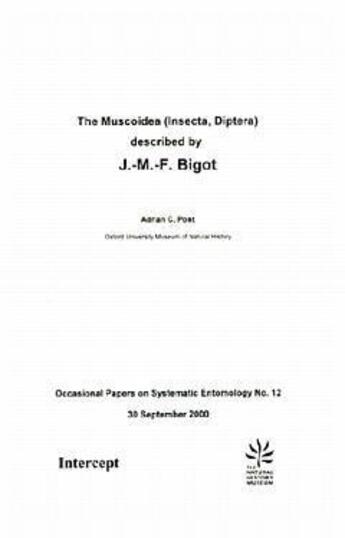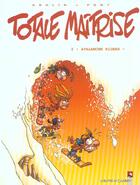-
Date de parution : 20/09/1970
-
Editeur :
Intercept
-
EAN : 9780946707720
-
Série :
(-)
-
Support :
Papier
Résumé:
A review is given of the Muscoidea (families Scathophagidae, Fanniidae, Anthomyiidae and Muscidae) described by the 19th century French dipterist J.-M.-F. Bigot. 128 species are discussed, of which 122 were described by Bigot and 6 were made available by other authors based on names in his... Voir plus
A review is given of the Muscoidea (families Scathophagidae, Fanniidae, Anthomyiidae and Muscidae) described by the 19th century French dipterist J.-M.-F. Bigot. 128 species are discussed, of which 122 were described by Bigot and 6 were made available by other authors based on names in his collection. They are currently assigned to the families Scathophagidae (1), Fanniidae (7), Anthomyiidae (24), Muscidae (93), Lonchaeidae (2), and unplaced (1). The species are dealt with alphabetically, with references to the original description and material, the extant type-material is discussed, and current taxonomic assignments and synonymies are given. The primary types of 77 species are in the Oxford University Museum of Natural History, 42 in the Natural History Museum (London), 4 in the Museum National d'Histoire Naturelle (Paris), and 1 in the Museum fur Naturkunde der Humboldt-Universitat (Berlin), the types of 4 species are lost. 16 lectotypes are designated. Four new synonyms are established: Curtonevra fulvipes Bigot, 1887 is a new synonym of Curtonevra (now Dasymorellia) callidimera Bigot, 1887, Limnophora rufipes Bigot, 1885, and Bithoracochaeta atricornis Malloch, 1934, are new synonyms of Hydrophoria (now Bithoracochaeta) calopus Bigot, 1885, Limnophora rufifrons Bigot 1885, is a new synonym of Musca (now Helina) depuncta Fallen, 1825. This review concludes with a nomenclatural summary, a biogeographic summary, and a bibliography that includes all Bigot's publications covering the Muscoidea.
Donner votre avis















